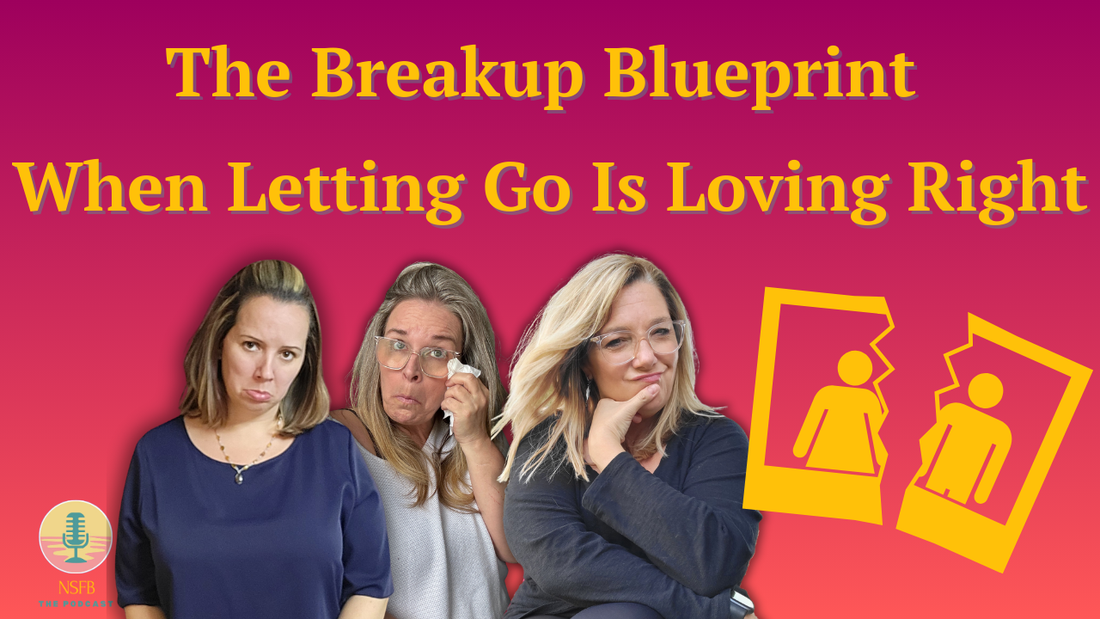
The Breakup Blueprint — When Letting Go Is Loving Right
Share
Breakups often come with the narrative that someone has to be the villain. But what if, in reality, no one needs to be wrong? It's not uncommon for relationships to end without betrayal or deceit. Sometimes, the bravest thing is acknowledging that someone isn't your person. This realization can be the healthiest step forward, as staying in a relationship that's not right can be far more damaging.
The Many Faces of Breakups
Breakups arrive in various forms—loud, quiet, overdue, or unexpected. From setting boundaries that may feel like emotional CrossFit to understanding the difference between relationship growth and emotional exhaustion, each split holds its unique challenges and learning experiences.
Often, we remain in relationships due to fear or the sunk cost fallacy—thinking that years together mean wasted time if it ends. However, acknowledging the difference between temporary relationship exhaustion and the deeper feelings of being stuck is crucial.
Relationships can grow tiring, but it's essential to recognize when emotional exhaustion signifies that the other person isn’t investing in the relationship’s growth. Differentiating love from trauma bonding and understanding when you're frozen in a state of inaction can guide you toward healthier dynamics.
Breaking the Cycle
Staying in a cycle of dysfunction, even when recognizing it, can be confusing. Many people return to partners despite the dysfunction because they struggle to accept that two opposing truths can coexist: recognizing dysfunction while missing the person.
It's vital to break this cycle for genuine growth. Love doesn’t have to mean longevity. Recognizing when a relationship only looked good on paper but lacks deep alignment is an essential step toward honesty with yourself and others. Staying in such a relationship might prevent both partners from finding true happiness.
Navigating Post-Breakup Boundaries
Setting boundaries post-breakup is essential yet challenging. Often, there’s an urge to remain friends, blurring the necessary boundary lines. It’s crucial to establish clear limitations to facilitate the grieving process and aid in healing. This hard-line reminder can make moving on, and avoiding intertwined lives long after the breakup, possible.
Drawing parallels between personal emotional healing and medical recovery can illustrate this: clean breaks heal better. While you might retain love for someone, establishing boundaries remains essential for personal well-being. Remember, boundaries aren't rejection—they’re rehabilitation for your nervous system.
Living with Boundaries
Recognize that setting boundaries is an act of self-respect. Transparency in intentions offers personal clarity and healing. Ensure boundaries suit your personal growth, even if they seem selfish—because healing isn't about others. If someone pushes back against your boundaries, it’s often because they benefited from you not having them.
Learning Anew: Generational Shifts
Boundaries and breakups also offer learning opportunities. Observing younger generations handle breakups and boundaries shows remarkable growth. Where once older generations watched, younger ones are often setting impressive examples. Each generation learns and adapts from the past, leading to healthier relational dynamics.
Today's generation exhibits strength and clarity in setting boundaries. It’s a testament to growth and adaptability: clarity is kindness. Let the love you once shared guide your respectful separation.
Permission to Trust Your Intuition
If you're questioning a relationship’s end, remember: not all endings are failures. True endings can set both parties free, highlighting the true heartbreak—loss of potential, not failure. Trust your intuition and accept your breakup as valid.
Breakups can be liberating when approached with respect and boundaries. Every relationship, no matter its duration, shapes our personal growth. Embrace the knowledge and growth, and remember, clarity is kindness.
